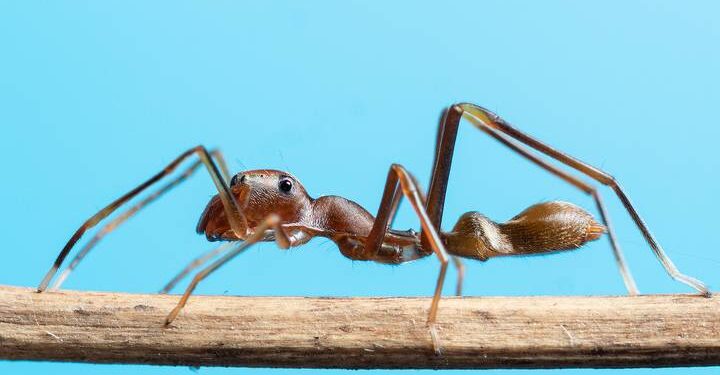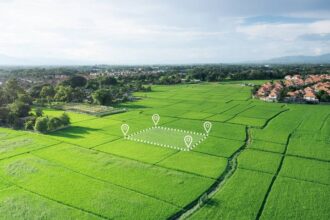10 Different Animals That Eat Ants

Ant-eating creatures such as anteaters, aardvarks, and specific birds include ants in their meals. They possess special traits like long tongues, powerful jaws, or specialized beaks to catch and eat these tiny insects. For example, anteaters use their long, sticky tongue to scoop up ants from their hills and homes.
These animals feed on ants because they are plentiful. Ant colonies can contain thousands or even millions of ants, providing an easily accessible and energy-packed meal. Ants’ small size and limited defences also make them an easier target than larger or trickier prey.
In an ecosystem, ant-eating animals are beneficial as they manage ant numbers. Ants can become pests, invading homes, gardens, and farms. Creatures that consume insects keep these populations under control, reducing the need for chemical pest control techniques. Besides, these critters keep ants from taking over particular areas and help maintain ecosystem balance.
Discover a list of different animals that eat ants.
1. Anteaters
Anteaters are intriguing creatures with long snouts and thick, fluffy tails. They have a keen sense of smell and a long, sticky tongue for quickly slurping ants and termites. These animals mostly eat insects and live alone in Central and South America.
Their unique features are suitable for their insect-based diet. Anteaters have sharp claws to break into ant and termite homes, and their tongues can stretch more than two feet to catch insects easily. Their pungent smell helps them find ant and termite groups efficiently. By eating lots of insects, anteaters help control their numbers in the ecosystem, which is essential for habitat health.
2. Aardvarks
Aardvarks are unique mammals living in Africa. They look unusual, with large ears and a pig snout. Aardvarks are active at night, eating primarily ants and termites. They use powerful claws to dig into termite mounds and ant hills while their sticky tongues capture prey.
Aardvarks eating ants and termites are advantageous because they help manage insect populations in their surroundings. Too many termites and ants can harm plant roots or structures, so Aardvarks are vital in keeping these numbers balanced. Their burrowing also creates shelter for other animals nearby, proving that aardvarks have a significant role within the African savannas and woodlands food chain they call home.
3. Pangolins
Pangolins, often called “scaly anteaters,” are truly unique animals with tough, overlapping scales made of keratin – just like human fingernails. These creatures mostly eat ants and termites, using their long, sticky tongues to catch them. Pangolins are famous in Africa and Asia for their peculiar looks and role in controlling insect populations.
Pangolins benefit by eating ants and termites. First, they keep insect populations under control in their habitats, stopping overpopulation that harms ecosystems. Second, they help keep insect species balanced in their environment. Eating ants and termites supports plants and other animals’ overall health by preventing damage caused by too many insects.
4. Antlions
Antlions are intriguing insects recognized for their unique predatory ways. Their life cycle starts as larvae that build sandy cone-shaped pits in soft soil. These pits trap ants and other tiny insects that accidentally fall in.
When the antlion larva feels the prey’s vibrations, it flings sand at the target, making it slide down the pit’s slope. The antlion then catches and eats the helpless ant. This method gives them a constant supply of ants as their primary food. As they grow, antlions become adult insects with fragile wings.
5. Frogs
Frogs are adaptable amphibians in many environments, such as forests and wetlands. Various frog species eat ants and other insects. Ants are a good food source for frogs because they’re plentiful and small. Frogs use their lengthy, sticky tongues to catch ants and other prey with quick, precise strikes.
Some ants are attracted to water sources, making them easy and typical food for frogs near ponds, streams, and similar watery areas. This eating behaviour helps control ant numbers and is crucial to the ecosystem’s food chain.
6. Birds
Birds are diverse animals that fly. They have different diets, but some enjoy eating ants and other insects. Birds find ants appealing due to their high protein content and plentiful numbers. Insect-eating birds like woodpeckers, nuthatches, and certain warblers play a significant role in controlling insect populations.
Birds’ role as a food source is connected to their impact on insect populations. Feeding on ants and other insects protects plants, crops, and forests from potential damage by keeping insect populations balanced. This benefits ecosystems and human interests and even reduces the need for chemical pest control – all contributing to the overall well-being of different habitats.
7. Bears
Bears are big, strong mammals with shaggy fur and sharp claws. They eat a mix of plants, fish, and small mammals, but some bears, like the North American black bear, enjoy ants. These ants have plenty of protein and nutrients during summer. Bears find ant nests using their keen sense of smell and use their claws to open them for food.
8. Antbirds
Antbirds, true to their name, eat a lot of ants and insects. Antbirds have adapted to this unique diet through specialized physical features and behaviours. They have strong bills to break open ant nests and are quick at catching ants among leaves and on the ground. By controlling ant populations, antbirds help maintain balance in their ecosystems and protect local plants from damage caused by too many ants.
9. Armadillos
Armadillos, unique mammals with armour-like plates, inhabit the Americas. Their strong shell shields them from predators. With a sharp sense of smell and impressive digging skills, they find and eat various insects, especially ants. Armadillos consume many ant species, controlling their population in their habitat.
10. Meerkats
Meerkats, small social mongooses from Africa, live in close families called mobs. They work together and eat a wide range of foods, with ants being a big part. Sharp-eyed meerkats locate ant colonies using their quick claws and teamwork to dig into them. This way, they control the ant population while gaining protein-rich food.


